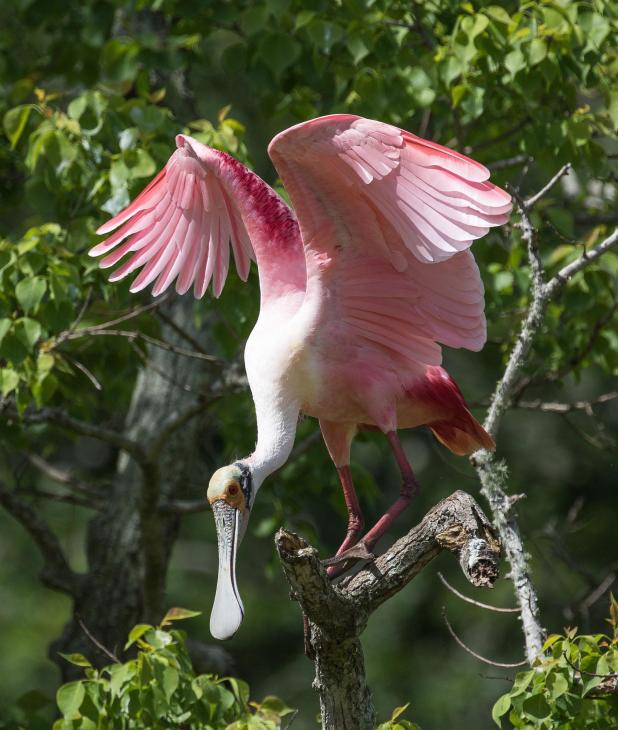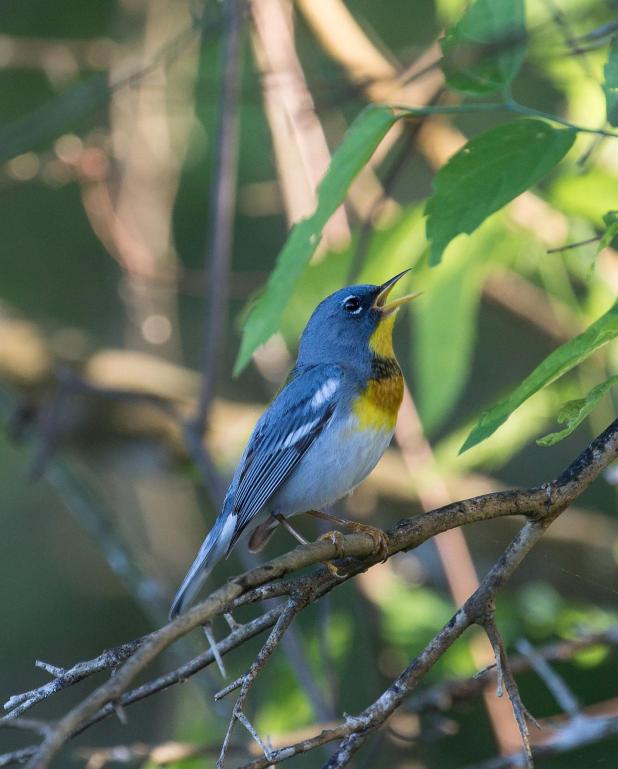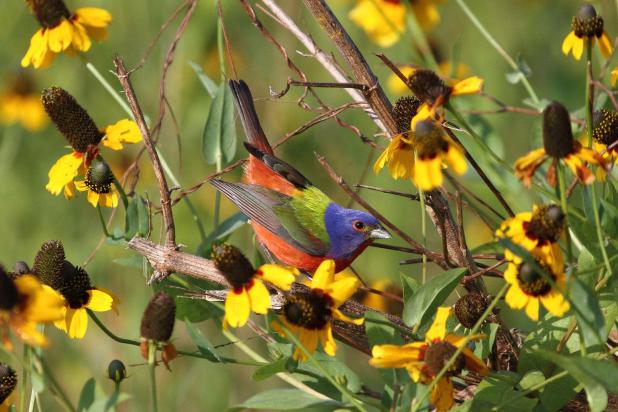
The Review/John K. Flores
Roseate spoonbills are always a bird watcher's favorite.

Northern parulas have seemed to arrive early this year.

Buntings, both indigo and painted, are birds that spend summers locally.
John K. Flores: The birds are back; migration has yet to reach its peak
Whether you’re an avid birder, nature photographer, or just plain love viewing wildlife, there’s nothing like chasing the neotropic songbird migration that typicallly peaks during the second, third and fourth weeks of April.
After what seemed to be a slow start this month, the birds have begun to arrive this past week in good numbers, with the peak yet to come.
New Iberia resident and avid nature photographer Frank Garacci says the migration is on.
Garacci, who spends several days a week chasing birds, said, “I don’t believe its peaked yet. I think we have another 3 to 4 weeks to enjoy their travels north. Grand Isle seems to be heating up as far as the number of different species coming through. St. Mary has had their share of birds coming through, too.”
Paul Schaub, local birder and President of the Terrebonne Bird Club, reported seeing plenty of warblers so far that summer in St. Mary and the surrounding parishes.
Schaub said, “We’re seeing prothonotary warblers, northern parulas, yellow throated warblers, and hooded warblers in good numbers. We just got back from Grand Isle yesterday where we saw good numbers of orioles, tanagers, vireos, and thrushes. Within the next three weeks we will see even more.”
From Sabine to Venice, the Louisiana northern Gulf Coast is teeming with neotropic songbirds during much of April. In Dr. George H. Lowery Jr.’s book, “Louisiana Birds”, he points out in a chapter, “Louisiana as a place to see birds,” there are 411 species that have been recorded within the boundaries of the state, which is more than half of all the birds known to occur regularly in North America, north of Mexico.”
Lowery also touches on the economic value of birds by pointing out the tremendous numbers of noxious insects they feed on and how they are instrumental in controlling rats and mice. Additionally, he notes they destroy great quantities of weed seeds and help keep the countryside clean of carrion.
However, the economic value goes even further with several small towns holding birding festivals during the months of April and May. In Jefferson Parish, Grand Isle will hold its birding festival this weekend, April 19-20. In two weeks, St. Bernard will hold its bird festival.
Schaub recommends watching the weather to maximize your bird outing.
Schaub said, “The best time to go is after a front comes through with some good rain. Get to the coast. You may get a nice fall out of birds after the storm has passed.”
Buntings, both indigo and painted, along with blue grosbeaks are birds that spend summers in Louisiana. Arriving in abundance in early April they hang around until mid to late October before migrating south to Central America and South America.
The cheery songs of buntings and their beautiful colors make them a favorite among birders and people who have feeders in their backyards.
Garacci said, “I’ve spotted buntings in a couple of locations in St. Mary Parish in good numbers. They were feeding on grass seeds.”
One early migrant, the northern parula, spends its summers in our coastal region. The small, colorful bird is one of our smaller warblers and is known to make its nest in Spanish moss. This bird can be found in good numbers anywhere you see moss draping oak and cypress trees.
Garacci said, “Personally, I’ve seen more northern parulas in the area than we’ve had in the past.”
One of the things about spring is, most all species of birds, whether songbirds or wading birds, are in full mating plumage with remarkable colors.
One of our local wading birds, the roseate spoonbill, is a vibrant pink mixed with shades of whites and reds. Their colorful appearance and odd-looking spoon-shaped bills make them a favorite among birders.
Whether you’re a seasoned birder or novice, there’s nothing quite like the spring migration.
Schaub said, “Blues, reds, and yellows are the colors for the season. It’s a great time of year for bird watching.”
John Flores is the Morgan City Review’s outdoor writer. He can be contacted at gowiththeflo@cox.net.
